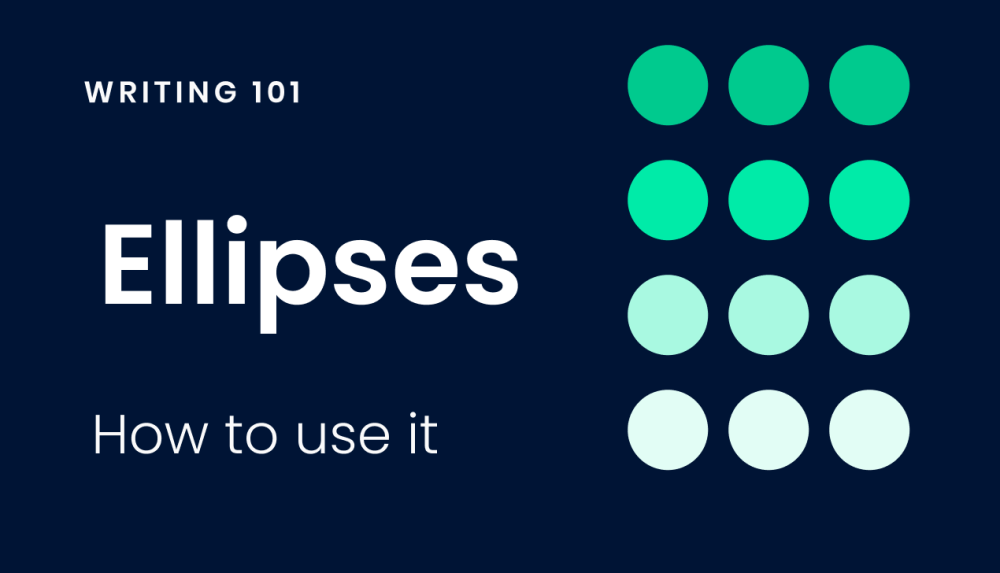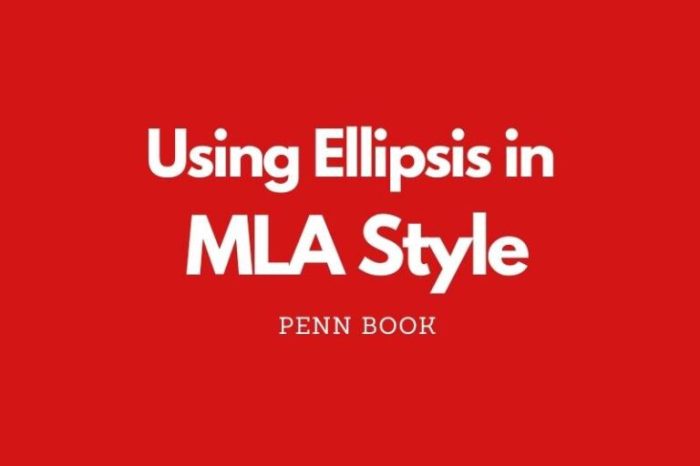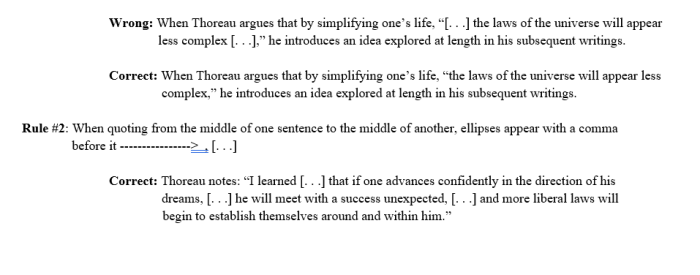Ellipses enable writers to edit quotations – Ellipses, those enigmatic dots, serve as indispensable tools for writers, enabling them to edit quotations accurately and effectively. This article delves into the nuances of ellipsis usage, exploring its ethical considerations, contextual implications, and stylistic variations.
Ellipses play a pivotal role in preserving the integrity of quoted material, allowing writers to omit irrelevant or repetitive sections while maintaining the essence of the original text. However, the judicious use of ellipses is paramount to avoid distorting the intended meaning or creating ambiguity.
Ellipses in Quotation Editing

Ellipses are used to indicate omitted text within quotations. They are typically represented by three dots (…). Ellipses can be used to:
- Condense lengthy quotations
- Remove irrelevant or distracting material
- Emphasize certain portions of a quotation
When using ellipses, it is important to maintain the original context of the quotation. Ellipses should not be used to alter the meaning or intent of the speaker. Additionally, it is important to use ellipses sparingly and only when necessary.
Ellipses and Contextual Integrity

Ellipses can have a significant impact on the intended meaning of a quotation. It is important to use ellipses carefully and to ensure that the original context is preserved.
When using ellipses, it is important to:
- Consider the purpose of the quotation
- Identify the key points of the quotation
- Omit only irrelevant or distracting material
By following these guidelines, you can ensure that ellipses are used to maintain contextual integrity and to accurately represent the speaker’s intended meaning.
Ellipses in Different Writing Styles
The use of ellipses varies depending on the writing style. In academic writing, ellipses are typically used sparingly and only when necessary to condense lengthy quotations or to remove irrelevant material.
In creative writing, ellipses can be used more liberally to create emphasis, suspense, or to suggest unspoken thoughts or emotions.
Here are some examples of effective ellipse usage in different writing styles:
- Academic writing:“The author argues that the use of ellipses can be a powerful tool for editing quotations…”
- Creative writing:“She stood there, frozen in place, her eyes wide with fear… what was she going to do?”
Ellipses for Emphasis and Suspense
Ellipses can be used to create emphasis and suspense in writing. By omitting certain words or phrases, ellipses can create a sense of anticipation or uncertainty.
Here are some examples of how ellipses can be used for emphasis and suspense:
- “The killer is still out there… somewhere…”
- “I know what you did… but I’m not going to tell…”
When used effectively, ellipses can be a powerful tool for creating emphasis and suspense in writing.
Ellipses and Alternative Editing Techniques: Ellipses Enable Writers To Edit Quotations

Ellipses are not the only way to edit quotations. Other techniques include:
- Paraphrasing:Restating the quotation in your own words
- Summarizing:Condensing the quotation into a shorter, more concise version
- Omitting:Removing the quotation entirely
Each of these techniques has its own advantages and disadvantages. Ellipses are the most concise option, but they can also be confusing if the reader is not familiar with the context of the quotation. Paraphrasing and summarizing are more time-consuming, but they can help to clarify the meaning of the quotation.
Question & Answer Hub
Can ellipses be used to indicate emphasis?
Yes, ellipses can be used strategically to create emphasis and suspense in writing, drawing attention to specific words or phrases and leaving the reader with a sense of anticipation.
What are some alternative methods for editing quotations?
Alternative methods for editing quotations include using brackets, dashes, or square brackets to indicate omissions or insertions, providing additional context or explanations within the quotation itself, or paraphrasing the quoted material.
How can I ensure that ellipses maintain contextual integrity?
To maintain contextual integrity when using ellipses, ensure that the omitted text does not alter the meaning or intent of the original quotation. Use ellipses sparingly and only when necessary, and consider providing additional context or explanation to avoid confusion.